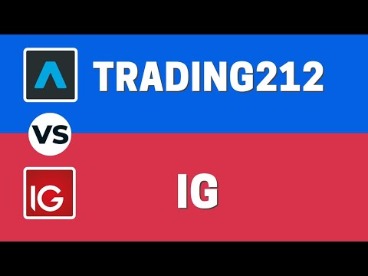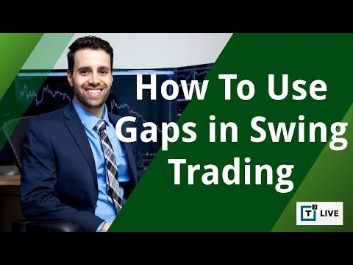Contents
The goal is to continually increase the performance percentage of the average winning trade. There are a variety of methods traders use to capitalize on market swings. Swing traders are exposed to gap risk, where a security’s price changes while the market is closed.

You should also be careful with which swing trading software and system you will use. For example, if you have a set profit target, you can allow your profits to run because you have a longer holding period. StocksToTrade in no way warrants the solvency, financial condition, or investment advisability ofany of the securities mentioned in communications or websites. In addition,StocksToTrade accepts no liability whatsoever for any direct or consequential loss arising from any useof this information.

It’s a specific trading method where you hold the stocks for a short yet unspecified amount of time. So you might hold a position overnight or even as long as a few months. It is also worth noting that professional traders may use algorithms to act on reliable signals much faster than human traders can move.
Momentum trading strategy
https://en.forexbrokerslist.site/ traders use moving averages to provide support and resistance levels and bullish or bearish crossover points. Traders can choose between the simple moving average and the exponential moving average . The EMA might be preferable for some since it places more weight on the latest data points and can give traders more precise trend signals than a simple moving average.

SmartAsset’s free tool matches you with financial advisors in your area in 5 minutes. If you’re ready to be matched with local advisors that will help you achieve your financial goals, get started now. SpeedTrader provides information about, or links to websites of, third party providers of research, tools and information that may be of interest or use to the reader. SpeedTrader receives compensation from some of these third parties for placement of hyperlinks, and/or in connection with customers’ use of the third party’s services. SpeedTrader does not supervise the third parties, and does not prepare, verify or endorse the information or services they provide. SpeedTrader is not responsible for the products, services and policies of any third party.
It isn’t for every investor and not every investor can succeed at it. It takes time, practice, and experience to trade price swings. A trader can measure their performance as a percentage of the trading channel width. The perfect trade would be buying at the bottom channel line and selling at the top channel line, which would be a 100% performance. If a trader captured one-half of the channel, it would be a 50% performance.
Swing Trading: What It Is and the Pros and Cons for Investors
Some https://topforexnews.org/ struggle with day trading for a variety of reasons, but position trading can be SO boring … Enter swing trading. That being said – if the rally quickly dies, the swing trader has no problem selling the stock and moving on. A swing trader buys XYZ, determining that the stock is about to break out. Generally speaking, stocks will move in one direction for a long period of time not depending on whether it’s a bull or bear market.
Many people who want to trade stocks prefer swing trading because of its low commitment and limited risk. Swing traders buy stocks to sell them later when the market has moved higher. Swing traders know their stop-loss point and they take profits regularly. Though swing trading and day trading are both styles of active trading that seek to benefit from short-term trades, there are several key differences. And remember, the shorter your time horizon and the more trades you make, the more you’ll rack up in transaction costs. This can water down your overall return, even if your swing trading strategy is otherwise profitable.
Unlike day trading, swing trading does not require constant monitoring since the trades last for several days or weeks. Swing trading and day trading have many similarities, but the most marked difference is the frequency of trades. Swing traders focus on short-to-medium term positions while day traders close out their positions at the end of each trading day. Day trading is a full-time job, requiring the trader to monitor market movements throughout the day and trade frequently.
- While any exposure in the market either long or short can bear risk, a short position tends to carry much more potential risk due to the possibility of a short-squeeze.
- Either way, swing trading can be risky and is often compared to being somewhere in the middle of day trading and trend trading.
- The goal is to continually increase the performance percentage of the average winning trade.
- This means that if the trader is approved for margin trading, they only need to put up $25,000 in capital for a trade with a current value of $50,000, for example.
- That’s not to say swing trading isn’t risky — any type of trading is.
- The goal of swing trading is to capture a chunk of a potential price move.
It requires them to enter and exit a trade in a matter of seconds, minutes, or hours in a single day. Swing trading is used to profit from the market trend of securities. Swing traders mostly use temporary price movements to make small profits that cumulate over a long time to yield large gains. However, traders run the risk of overnight price fluctuation of securities and the inability to sell them. As a result, swing trading is subject to market volatility and has higher fees. Swing traders use the indicators of technical analysis to identify price swings and determine whether a stock price will rise or drop in the short run.
Take Advantage of StocksToTrade Features
Swing traders have the flexibility of a daytrader and the patience of a long-term investor. Are contracts for the future delivery of the stocks that make up an index of 500 large US corporations at a predetermined price. Is a measure of how much money you might stand to earn on an investment over a set period of time, usually expressed as a percentage — in some cases, yield can also be negative.

If you have a low https://forex-trend.net/ tolerance, or if you don’t have sufficient risk capital, then you might want to avoid it altogether. But if you have the tolerance, risk capital, and willingness to learn to swing trade, you might find it a valuable skill that could potentially supplement your longer-term investments. As mentioned, other methods can be used to profit from the market’s short-term swings. If the market is strong, you can wait for the channel line to be hit. An experienced trader may shift his tactics and hold a little longer, perhaps until the day when the market fails to make a new high.
With StocksToTrade Pro, you’ll learn how to develop your own strategy and trade like a pro under the guidance of Tim Bohen — StocksToTrade’s lead trainer. Let’s say Company XYZ’s stock recently fell due to a negative news catalyst. But, recently, the stock has seen growing momentum and volume. So let’s take a look at what a swing trade could look like in the real world.
Swing trading and day trading are two popular strategies you can use to make money online. We have looked at their differences and some of the pros and cons of using the two approaches. Day trading is a type of trading where your goal is to have all your trades closed by the end of the day. The strategy has become popular among retail traders during the Wall Street Bets craze that saw shares of many companies like AMC and GameStop surge. What’s important is that you make the effort to develop a strong trading strategy.
The stock’s price action is bouncing in a certain range but never getting too far from a specific value. Holding this stock long-term may not generate a lot of profit if nothing changes. Some swing traders may believe that the value of the stock would move up and down from day to day, even though it wouldn’t really change over time. While the market as a whole has tended to grow over longer periods of time (10-30 years), individual stock prices spend a lot of time going up and down.
The goal of swing trading is to capture a chunk of a potential price move. While some traders seek out volatile stocks with lots of movement, others may prefer more sedate stocks. Cory is an expert on stock, forex and futures price action trading strategies. Because swing trading involves longer holds than scalping or day trading, it’s key to do your research on the stock and the potential of an uptrend.
Swing trading is a trading strategy that involves buying or shorting financial assets and holding the positions for a few days. As the name suggests, swing traders look for opportunities that could last several days and go all-in. It’s an active trading strategy that captures the swings in market sentiment and allows you to enter and exit at key levels. Swing trading differs from day trading in that you are likely to hold your positions overnight. On the other hand, swing trading is when trades are made over a short period of time, usually between 2 and 6 days, though some positions can last for weeks or even a few months. As with day-trading, swing trades identify trends within the market and seek to profit on those trends.
As a result, they avoid the risk of gaps from news announcements coming in after hours and causing a big move against them. Meanwhile, swing traders have to be wary that a stock could open significantly different from how it closed the day before. Technical analysis is the ‘bread and butter’ of swing traders, who use it to identify patterns, examine investor sentiment, and spot potential short-term changes in trends.
INVESTMENT BANKING RESOURCESLearn the foundation of Investment banking, financial modeling, valuations and more. ST is possible without being glued to the monitor for the whole day, whereas scalping requires one to sit in front of the system to monitor the securities for the entire day. The securities are held for seconds or minutes in scalping, whereas those in ST are held for a few weeks or longer. You should consider whether you understand how CFDs work and whether you can afford to take the high risk of losing your money. CFDs are complex instruments and come with a high risk of losing money rapidly due to leverage. Match ideas with potential investments using our Stock Screener.